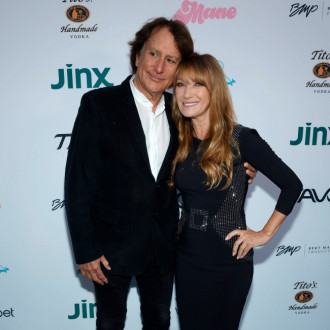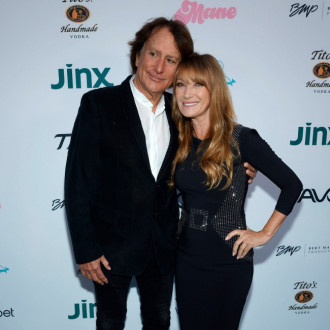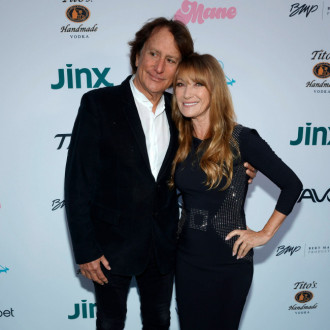Jane Seymour blasts ageism by declaring women have no ‘sell-by date’
By Bang Showbiz in Lifestyle / Showbiz on 09 March 2024
After opening up about her great sex life aged 73, Jane Seymour has blasted ageism by declaring there is no “sell-by date” for women.

Jane Seymour has blasted ageism by declaring there is no “sell-by date” for women.
The 73-year-old actress, famed for playing psychic Bond girl Solitaire in 1973’s James Bond film ‘Live and Let Die’, hit out after declaring she is having the best sex of her life with boyfriend John Zambetti.
She told Page Six: “Life does go on, and I don’t think there is a sell-by date for women unless they choose it.
“A lot of people say, ‘Don’t you wish you were younger?’ And, in a funny way, no because I’ve had so much experience, and I’ve had such a rich life and made so many friends and so many extraordinary experiences.
“My life is very full now, and hopefully I’m wiser.”
‘Dr Quinn, Medicine Woman’ actress Jane revealed earlier this year she loved dating her musician boyfriend John, 74, due to their bedroom antics.
She said in an essay for Cosmopolitan’s ‘Sex After 60’ digital issue:
“Sex right now is more wonderful and passionate than anything I ever remember because it is built on trust, love and experience.
“I now know myself and my body, and John has had his own experiences in his life – it’s not like when you’re younger.”
Jane, who has four children, has been married four times – to Michael Attenborough from 1971 to 1973, Geoffrey Planer from 1977 to 1978, David Flynn from 1981 to 1992 and JAMES KEACH from 1993 to 2015.
She has revealed her years in showbusiness were marred by #MeToo-style events before the term came into being.
Jane has said a “major” producer asked her to visit his home in 1972 to screen test for a role and then allegedly harassed and threatened her when she brushed them off.
She added the incident led her to briefly quit acting and move back to her native Britain, and told Page Six: “Women have put up with a lot, and I think they still do.
“I’ve recently done a campaign about women being unseen and unheard, and it’s true, especially when I talk to women who have gone to doctor’s offices and places like that.
“Women need to be encouraged to stand up for themselves, especially my generation; that wasn’t the case back then.”
Contactmusic
Suggested

Leisure Festival - Dreamland in Margate
On the same day that Glastonbury welcomed back Margate's adopted sons, The Libertines, Margate itself put on it's very own Leisure Festival as it...

Oasis fans must answer trivia question to secure pre-sale ballot place
Oasis fans hoping to get tickets for the band's reunion shows are being asked a trivia question to secure access to a pre-sale ballot.

Pretty Fierce talk to us about collaborating with Doja Cat, emetophobia, arena tours and staying "true to yourself" [EXCLUSIVE]
Sheffield's very own all girl group Pretty Fierce are still on a high after the recent release of their debut single - 'Ready For Me'.

Will Varley & Jack Valero - The Astor Theatre Deal Live Review
Three nights before the end of his current tour Will Varley returned to his home town of Deal to delight a sold out crowd in The Astor Theatre.
Advertisement

WYSE talks to us about her "form of synaesthesia", collaborating with Radiohead's Thom York and the prospect of touring with a band [EXCLUSIVE]
With only a few days to go before Portsmouth based songstress and producer WYSE releases her new single, 'Belladonna', we caught up with her to find...

Bay Bryan talks to us about being a "wee queer ginger", singing with Laura Marling and being inspired by Matilda [EXCLUSIVE]
Colorado raised, Glasgow educated and Manchester based Bay Bryan is nothing if not a multi-talented, multi-faceted artist performing as both...

Keelan X talks to us about staying true to "your creative vision", collaborating with Giorgio Moroder and being "a yoga nut" [EXCLUSIVE]
Former Marigolds band member Keelan Cunningham has rediscovered his love of music with his new solo project Keelan X.
![Luke De-Sciscio talks to us about having the courage to be yourself, forgiving that which is outside of one's control and following whims [EXCLUSIVE] Luke De-Sciscio talks to us about having the courage to be yourself, forgiving that which is outside of one's control and following whims [EXCLUSIVE]](https://images.contactmusic.com/images/home/homepage/luke-de-sciscio-abof-a.jpg)
Luke De-Sciscio talks to us about having the courage to be yourself, forgiving that which is outside of one's control and following whims [EXCLUSIVE]
Wiltshire singer-songwriter Luke De Sciscio, formally known as Folk Boy, is set to release is latest album - 'The Banquet' via AntiFragile Music on...
Advertisement
Movies and Trailers

Fifty Shades Of Black Trailer
Marlon Wayans, the king of parody films has decided to tackle one of biggest films...

Austenland Movie Review
Fans of romantic fiction may enjoy this gimmicky comedy, which cleverly plays around with Jane...

Austenland Trailer
Jane Hayes has, what some might say, an unhealthy obsession with Jane Austen's novels and...

Freeloaders Trailer
A bunch of freeloaders are living rent-free in a rockstar's luxurious mansion, however, when they...

Wedding Crashers Movie Review
About 20 minutes before the credits roll in "WeddingCrashers," something goes very wrong. It feels...













